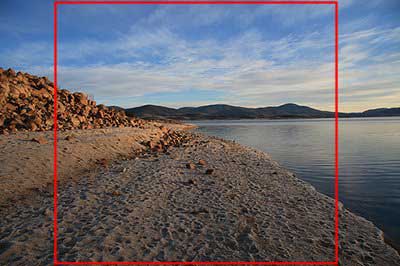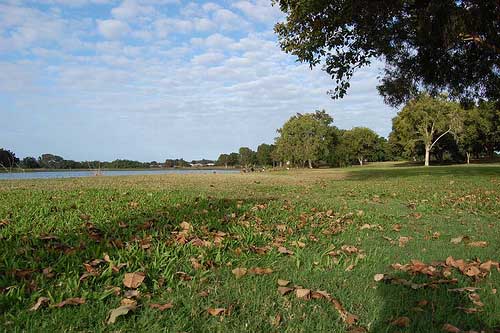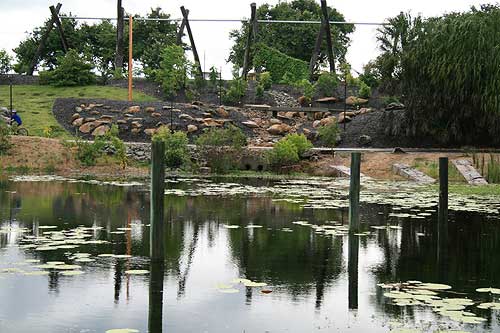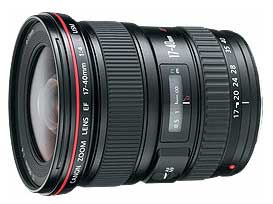There are many considerations photography enthusiasts need to take into account when choosing a DSLR lens for landscape photography.
For example, landscape photography usually requires a large depth of field. Meaning, photographers will normally want the whole scene in focus. Therefore, it’s not that important to have an expensive fast lens. If you look on the box your lens came with when you make a purchase, you’ll notice an f number. The lower the f number, the faster the lens, the more expensive it usually is.
For landscape photography, you generally won’t need a lens faster than an f4. Furthermore, a fast lens is often very large and heavy to carry. Considering many landscape photographers will hike or bike into beautiful areas, the last thing you want is a lens that weighs a ton.
Important considerations for choosing the best lens for landscape photography
- You will need a DSLR lens that isn’t too large and heavy to carry.
- You don’t necessarily need an expensive fast lens. Look on the lens packaging box, if the f number is 4 and above then it will be efficient for landscape photography.
- Finding a lens with Image stabilization is often a good idea. Image stabilization can mean the difference between getting a sharp or blurred shot. This is especially important if you will be hand holding your DSLR camera.
- If you are going to purchase only one landscape lens, then make it a wide angle lens. One of the advantages of these DSLR lenses is that they have a wider view of the scenery, meaning when you take the photograph, you will be getting more of the landscape scenery into each shot.
Shown below is an example of a landscape photo, shot with a wide angle lens that had a focal length of 17mm. The red square illustrates how a normal lens would have cut the image off short at either side.
A lens that has a focal length of 24 to 35mm are considered wide angle lens. Nowadays you can find great lenses that have a focal length under 24mm. These are considered as being ultra wide.
Wide angle lenses can also be used to give more depth to an image, especially if you are standing or laying at a height lower than the landscape you are photographing. The wider the focal length of the lens, the greater the effect will be. Take this image below for example:
Goose Ponds Mackay photographed with a Nikon wide angle lens
Digital SLR Camera: Nikon D40 SLR
DSLR Wide Angle Lens: Nikon 18-200mm f/3.5-5.6 G ED-IF AF-S VR DX
Exposure: 0.004 sec (1/250)
Aperture: f/8
Focal Length: 18 mm
ISO Speed: 200
Why this image works
The wide angle lens has created a 3D effect with the grass at the foreground being emphasized and just as much in focus as the sky above. The wide angle lens has been used to its full advantage to give a feeling that you could simply walk into the picture.
Many wide angle lenses also give you the option of using a normal focal length.Normal focal lengths are considered as those being within the range of 28mm to 50mm. This focal length is good for times when you want the main emphasis to be on an object in the background, giving the photo a more natural look and feel.
Botanical Gardens Mackay photographed with a Canon wide angle lens
Digital SLR Camera: Canon EOS 400D/Rebel XTi set on shutter priority
DSLR Wide Angle Lens: Canon EF-S 17-85mm f/4-5.6 IS USM
Exposure: 1/500 seconds
Aperture: f/5
Focal Length: 41 mm
ISO Speed: 200
Why this image works
The normal focal length (41mm) of the lens, emphasized the background elements more so than the lily pads in the foreground. This helped to create a more natural look and feel. However, when compared to the photograph of the Goose Ponds, this image didn’t horizontally get in as much of the landscape.
Best wide angle landscape lenses for Canon DSLR cameras
Listed below are the one’s considered as being the best Canon and Nikon landscape lenses. It’s important that you also check to make sure the lens you choose is compatible with your digital SLR model.
- Canon EF-S 17-85mm f/4-5.6 IS USM (ultra wide angle zoom lens)
This is a good all purpose lens that goes from ultra wide 17mm, all the way to a normal focal length of 85mm. It’s also not too large and heavy to carry and is priced around $520 USD at the time of writing this article. Another advantage is its image stabilization system that makes taking hand-held shots easier. Fantastic for those photographers who are just starting out and don’t want to spend a fortune, yet still need good quality photographs. You’ll notice many landscape photo’s found throughout this website are taken with Canon EF-S 17-85mm IS USM lens. - Canon EF 24-105mm f/4 L IS USM (wide angle zoom lens)
This landscape lens is for Canons more professional end of the market. It also goes from one wide angle extreme (24mm) to a higher 105mm focal length. It’s currently priced at $1046 USD. Similar to the one above, it also has the option of image stabilization. - Canon EF 17-40mm f/4.0 L USM (ultra wide angle zoom lens)
One of Canon’s best selling lens due to it’s low cost, considering it’s high quality. If you see a Canon lens with a red circle around the tip, you know it’s considered better quality (sharper images) than those without the ring. This one is currently priced at $674 USD. However, you do need to take into consideration that this particular wide angle lens doesn’t zoom in as far (40 mm) as the other two listed above.
Best wide angle landscape lenses for Nikon digital SLR (DSLR) cameras
- Nikon 18-200mm f/3.5-5.6 G ED-IF AF-S VR DX (ultra wide angle zoom lens)
This is the one to get if your after a quality landscape Nikon lens. It is currently priced at $745 USD, which is what you would expect to pay for a quality lens. Excellent range from 18mm ultra wide, zooming all the way to 200mm. Amateur photographers won’t be changing their lenses too often if they own this one. It truly is an all purpose lens. - Nikon 18mm – 70mm f/3.5-4.5G ED IF AF-S DX (ultra wide angle zoom lens)
Currently selling for $250 this is also a good all purpose lens, going from 18mm at its widest focal length to 70mm at the other end of the scale. The images won’t be as sharp as those taken with the lens listed above, however it is priced well for the budget photographer or those just starting out.Note:If you received a kit lens with your Nikon D40, you won’t notice much difference between this one and the lens (18-55mm f/3.5-5.6G ED II AF-S) that came packaged with your camera. - Nikon 18-135mm f/3.5-5.6G ED-IF AF-S DX Nikkor Lens (ultra wide angle zoom lens)
You can purchase this one for only a few dollars more at $294 USD. The advantage being the extra focal length at the normal end of the scale being 135mm. Reviews seem to be mixed on this one. Some like it, some don’t.



